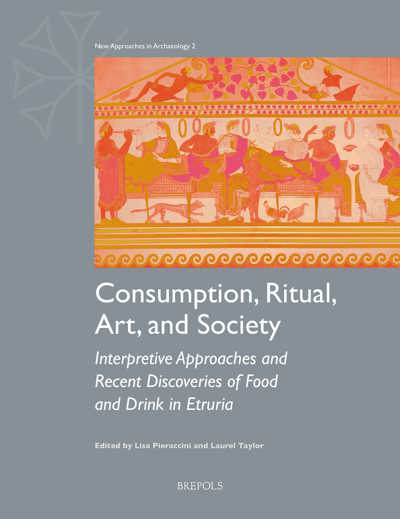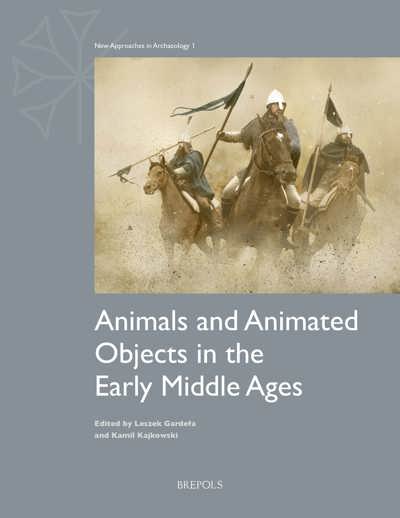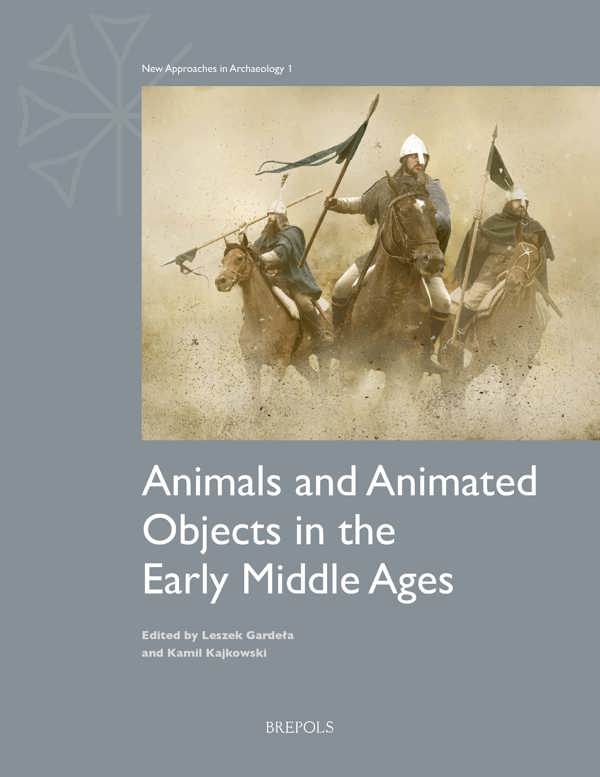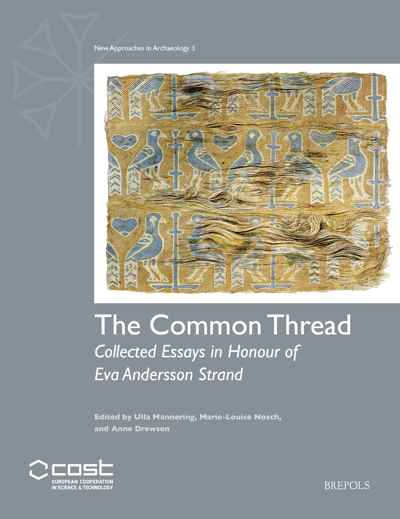
Animals and Animated Objects in the Early Middle Ages
Leszek Gardeła, Kamil Kajkowski (eds)
- Pages: 206 p.
- Size:216 x 280 mm
- Illustrations:30 b/w, 37 col., 8 tables b/w., 6 maps b/w
- Language(s):English
- Publication Year:2023
- € 80,00 EXCL. VAT RETAIL PRICE
- ISBN: 978-2-503-60090-1
- Paperback
- Available
- € 80,00 EXCL. VAT RETAIL PRICE
- ISBN: 978-2-503-60091-8
- E-book
- Available
"Besides thoughtful illustrations, detailed tables and appendices are provided that will be useful resources for future researchers. The data-driven approach of many of the contributions has merits, particularly in terms of highlighting the prevalence (or absence) of patterns of spatial and temporal distribution of animal bones or stylistic features. While it would be interesting to explore what tensions an even bolder engagement with post-humanist theory might reveal within and between the various datasets, this book makes an important factual and conceptual contribution to European archaeology in general, and to the study of past animal/human interactions in particular." (RENATE LARSSEN, in Medieval Archaeology, 67/2, 2023, p. 505)
"The case studies are all of specific assemblages but are well researched and presented. Together they offer new ideas on how to study and interpret animals and animal-linked objects and how to connect the diverse materials across regions. This volume will find an interested readership beyond the Medieval specialists and is for anyone who likes to consider a deeper understanding of how past people interacted and coexisted with other animals." (Marion Uckelmann, in Antiquity, 99(403), 2025, p. 266)
Leszek Gardeła has a PhD in archaeology from the University of Aberdeen. In 2013-2019 he conducted numerous international research projects and held academic positions in Poland, Norway and Germany. He is a specialist in Scandinavian and Slavic archaeology and has published widely on magic, atypical funerary practices, amulets, warfare, identity and cross-cultural interactions.
Kamil Kajkowski has a PhD in archaeology from the Polish Academy of Sciences and is Senior Curator at the West Cassubian Museum in Bytów. He specialises in interdisciplinary research on West Slavic pre-Christian beliefs and has published extensively on Slavic mythology, identity, warfare and ritual practices
Since time immemorial, animals have played crucial roles in people’s lives. In Continental and Northern Europe, especially in the Migration Period and the Early Middle Ages, animals were both feared and revered. Varying and often ambivalent perceptions of fauna were expressed through everyday practices, religious beliefs, and the zoomorphic ornamentation of a wide plethora of objects that ranged from jewellery, weapons, and equestrian equipment to wagons and ships. This timely volume critically investigates the multivalence of animals in medieval archaeology, literature, and art in order to present human attitudes to creatures such as bears, horses, dogs, and birds in a novel and interdisciplinary way.
The chapters gathered together here explore the prominence of animals, animal parts, and their various visual representations in domestic spaces and the wider public arena, on the battlefield, and in an array of ritual practices, but also examine the importance of zoomorphic art for emerging elites at a time of social and political tensions across Scandinavia and the oft-overlooked Western Slavic and Baltic societies. This innovative book draws together scholars from across Europe in order to pave the way for a nuanced international and interdisciplinary dialogue that has the capacity to substantially increase our perception of human and animal worlds of the Early Middle Ages.
List of Illustrations
1. Animals and Animated Objects in Early Medieval Worlds: An Introduction
Leszek Gardeła and Kamil Kajkowski
2. Bear Phalanges and Bearskins in Graves of the First Millennnium AD: Cultural Developments and Characteristics of a Unique Burial Custom in Central and Northern Europe
Sebastian Beermann
3. What Could Birds do for the Dead? Animals and Humans in the Mortuary Practices of Viking Age Ribe
Sarah Croix
4. Between Life and Death: Waterfowl in Viking Age Funerary Practices
Klaudia Karpińska
5. Exploring Animals as Agents and Objects in Early Medieval Iceland and Scandinavia
Harriet J. Evans Tang and Keith Ruiter
6. Horse Burials on Viking Age Gotland: Between Mounted Warriors and Totemic Animals
Matthias S. Toplak
7. Horses and Burial Rites in the Early Piast State and Pomerania
Jerzy Sikora
8. Riders on the Storm: Decorative Horse Bridles in the Early Piast State and Pomerania
Leszek Gardeła and Kamil Kajkowski
9. Between the Beasts: On the Meaning and Function of Small Quadruped Figurines from Estonia
Tõnno Jonuks and Tuuli Kurisoo




